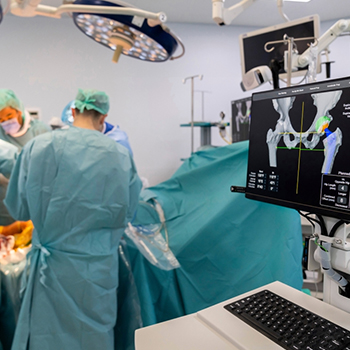Hip pain and range of motion problems may be signs of serious issues with the hip joint. Often, early diagnosis and treatment of minor hip problems can preserve the original hip joint. This helps in avoiding arthritis and delays or prevents the need for hip replacement. Its main objectives are restoration of the normal motion within the joint, functional improvement of the hip, and elimination of pain.
The common modes of joint preservation include physiotherapy, intraarticular injections, and surgery. The decision to use whatever particular method depends on the patient's joint conditions, and medical needs making the hip joint preservation, which is a highly personalized approach that varies from person to person. Orthopedic surgeons who are experts in hip preservation surgery say that people suffering from Hip Dysplasia, femoroacetabular impingement, and Residual effects of pediatric hip disorders can consider hip preservation surgery.
Even though hip joint preservation is preferred as an option, it is completely based on certain factors, that affect the outcome of the preservation surgery. They are,

- Hip pain is common in both elderly people and young adults with hip dysplasia or hip impingement. These conditions can lead to arthritis and may require surgical reconstruction or joint replacement. Other hip conditions like slipped upper femoral epiphysis and Perthes disease can also cause pain and arthritis due to adverse physical mechanisms of the hip joint. In such cases, it's often best to preserve the joint with conservative surgery rather than opting for total hip replacement, as artificial joints may wear out over time.
- Preservation techniques are usually associated with improved outcomes in younger people. In some cases where an elderly person is not eligible to undergo major surgery, instead, they prefer to get joint preservation surgery.
- The hip joint, the body's largest weight-bearing joint, is constantly under stress. Greater body weight increases this stress, making weight loss a key recommendation for preserving joint health in obese or overweight individuals.
- Muscles facilitate movement by contracting and relaxing. Joint movements depend on muscle condition and may cause pain when muscles are unhealthy. Regular exercise maintains and restores muscle strength, reducing joint stress and pain.
- When only small areas of the joint cartilage are affected by thinning or erosion, joint preservation is a suitable treatment option. However, if larger defects cause a significant loss of cartilage, total replacement surgery is more appropriate.
Depending on the individual needs, the doctors try to choose the most suitable option among the various new minimally invasive hip reconstruction and replacement techniques, some of them are;
- Core decompression and bone marrow aspiration concentrate (BMAC) for Avascular necrosis (AVN) / Osteonecrosis
- In-situ fixation / open reduction and internal fixation for Slipped upper femoral epiphysis (SUFE)
- Containment procedures for Perthes disease
- Open reduction and corrective pelvic osteotomy for Developmental Dysplasia of the hip (DDH)
Arthroscopic procedures:
- Labral repair
- Femoro-acetabular impingement
- Debridement for CAM, Pincer lesions
Open surgery
- Surgical dislocation
- Z-capsular cut hip joint dislocation
- Head reduction in COXA MAGNA
- Excision or removal of the synovium in pigmented villonodular synovitis
- Removal of tumorous cells in synovial chondromatosis
- Cartilage and bone grafts.


